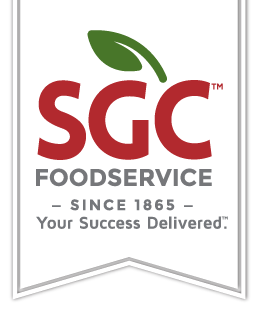Although inflation has impacted the prices of many stable goods, putting pressure on restaurant owners and consumers alike, demand for in-person dining experiences remains high. In fact, surveys have shown that it is increasing. To capitalize on this trend and sustain momentum during these uncertain times, restaurants must offer genuine experiences that keep patrons coming back.
While there are many ways to elevate the dining experience, the primary one is to improve your menu. Fortunately, it is possible to elevate your food while simultaneously cutting costs. Below are five simple tips for creating a top-quality menu on any budget.
Use detailed descriptions
Everyone is familiar with the phrase, “we eat with our eyes first,” but we rarely hear anyone say, “we eat with our imaginations.” However, the latter is just as accurate: research has shown that vivid descriptions of menu items increase both item sales and customer satisfaction. Bold adjectives such as “succulent” or “tender” and descriptions of the cooking process, such as “hand battered and deep fried,” create a vivid mental image that increases patrons’ appetite long before they get a look at the dish itself.
It’s essential to consider the specific impression you want your dish to create. Describing classic dishes as “traditional” or “old fashioned” evokes a feeling of nostalgia. At the same time, a clever pun or use of alliteration can cause laughter or surprise, drawing the customer’s attention to the items. Taking time to craft pleasing descriptions devoid of typos, which poorly reflect your establishment’s professionalism, makes a massive difference to the customer’s overall experience.
Be thoughtful about pricing
People might be eating out just as much as ever, but that does not mean that money isn’t at the forefront of their minds. Price raises might be unavoidable for many restaurants given the current climate, but there are subtle steps you can take to minimize their impact. One key tactic is to put the price after the description of the dish rather than before, which causes the customer to focus on the food rather than the price.
Another effective strategy is to remove dollar signs or the word “dollar.” Research has shown that consumers tend to spend more money at restaurants that do not have dollar signs on the menu, as our brain associates currency symbols with cost and expense. By contrast, simply having a number there allows guests to focus on the food item itself.
Streamline your options
A well-planned menu can improve your guests’ dining experience while simultaneously saving you money and making efficient use of your ingredients. It’s a good idea to minimize ingredients that only go in a single dish; instead, try to ensure that each more expensive component (e.g., proteins) is used at least three times throughout the menu. This helps minimize costs while ensuring that the ingredient continually rotates out, making it fresher and more enjoyable for your patrons.
It’s also essential to use tech to gather data about which menu options are selling and which aren’t. Having too many choices can overwhelm patrons and require you to purchase more ingredients, so taking off items that aren’t selling–especially those with unique ingredients–helps ease the burden on yourself and your customers.
Include creative plant-based options
It’s abundantly clear that plant-based eating is not just a fad but a rapidly growing industry. As general consumer demand for plant-based food has grown, chefs and brands of all kinds have stepped up to provide many creative and delicious options. As a result, diners’ expectations have grown immensely.
Restaurants can no longer afford to include a single plant-based option as an afterthought. Diners do not want to be forced to order a veggie burger every time they go out to eat, especially if burgers are not the restaurant’s specialty. Instead, it’s a good idea to look at the menu’s most popular meat-based items and find creative ways to put a plant-based spin on them.
Offer customization options
Giving customers a chance to customize their dishes is a powerful way to make the dining experience more engaging and immersive. This is especially so if your restaurant specializes in a particular food item, such as burgers or pasta. Laying out your menu so that the build-it-yourself process is easy to follow (e.g., subheadings for the base, protein, toppings, etc.) makes it far more likely that diners will decide to pursue this option.
When designing and executing your menu, simplicity is your best friend. A focused menu with just enough variety to keep things interesting will help you wow first-time customers and keep regulars coming back for more. Finally, it’s important to remember that data is your friend, and thoughtful revisions to your offerings will help keep things fresh for years to come.
Great restaurant menu designs can enhance the dining experience, help customers make satisfying choices, and stimulate appetite. However, a menu is more than just a list of the dishes a restaurant has available; it’s a powerful piece of branding capable of communicating a restaurant’s identity and driving profit—if it’s well designed.
Source: Full Service Restaurant News – fsrmagazine.com

